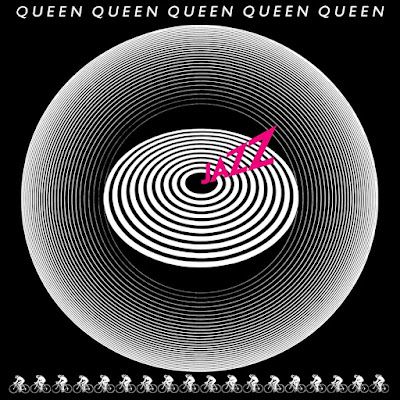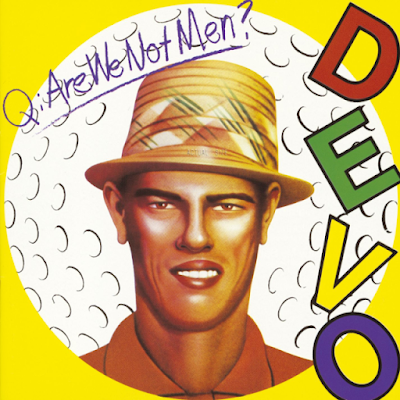Released
on December 8th, 1978, the debut LP from Public Image Ltd, First Issue,
turns 45 years old today. After the spectacular implosion of the Sex
Pistols at the beginning of the year, and encouraged by the band's debut
eponymous single two months prior, punk fans were eager to see what
Johnny Rotten had in store for an encore. Chances are they weren't
expecting to get hit over the head with an album that kicks off with a 9
minute art-rock dirge, pleading for a death that never comes, and ends
with a 7 minute disco piss-take whinging about how they "only wanted to
be loved". And while it may have been dismissed by many at the time as a
petulant private joke, the reality of the album was that the band were
digging in their heels in order to utterly upturn the apple-cart of what
punk (and pop music itself) was and could be.
PiL came into
being thanks to a casual conversation between John Lydon and Keith
Levene back in 1976, when they both realized that the day would soon
come when they'd be on the outs with their respective bands (Sex Pistols
& The Clash) and looking for new opportunities. They promised each
other they'd put their heads together when that time came, and sure
enough, PiL were born a couple of months after the Pistols fell to bits
in January of 1978. With close friend, Jah Wobble, quickly recruited
for bass, and drummer, Jim Walker, sourced via a music paper ad, the
band set about inventing their music the way they imagined it should
sound, as if the Pistols has actually succeeded in destroying rock 'n'
roll instead of reanimating its fetid corpse.
Beginning recording
in July at Virgin Records' Manor studio, the first track to emerge was
the single, Public Image. I've gone into great detail on that song's
single release already, so I won't repeat myself too much here. You can
look it up if you want to. Suffice it to say that the song set the bar
high for the rest of the album, perhaps too high. Following its
completion, the next set of songs, Theme, Religion and Annalisa, were
laid down at Virgin's Townhouse studio.
Theme kicks off the
album with a 9 minute excruciating wall of thunderous bass,
whip-cracking drums and Keith's guitar sounding like you're in a
continuous auto accident with a flurry of shattered glass smashing into
your face. Lydon tops it all off with his insistent wailing of "I wish I
could die", though the song is not anywhere near suicidal. Ironically,
there's something actually quite obstinate and life affirming about the
agony being expressed and the clear indication that nothing is capable
of convincing the songs protagonist to genuinely give up the ghost.
Lydon has described it thus, "Didn't you ever have that feeling when you
get up with a hangover, and you look at the world and think 'Count me
out, I'd rather die!'?"
Religion started off as lyrics written
while Lydon was on tour in the US with the Pistols. He tried showing
them to the rest of the band, but they weren't interested. The idea of
splitting the song into a spoken recitation followed by the full mix
was another example of the LP balking at convention, refusing to pander
to expectations. The song was divisive among the band members. Wobble,
particularly in later years, felt the disparagement of religious belief
was unfair, and he wasn't happy with the contrivances of the mix, with
its radical panning of instruments and voices sounding forced. Keith
always loved the track and came up with the idea of the two versions.
Annalisa follows with its harrowing true life story of a young German
girl starved to death by her superstitious parents, who believed she was
"possessed". That wraps up the first side of the LP, while the single
kicks off the second, leaving the remainder of the album to struggle
towards completion.
After the first four songs were recorded,
Virgin's advance dried up and the band were forced to resort to
recording at Gooseberry Sound Studios, a cheap reggae studio used
because Lydon knew it from the recording of some Sex Pistols demos.
Lowlife, Attach and Fodderstompf were all recorded there, sounding less
produced and immediate in their impact than the first half of the album.
Fodderstompf, in particular, was another divisive track due to its
absurdity and expedience. Jim Walker hated it, considering it a rip-off
for anyone who bought the album. Keith didn't have anything to do with
it. It's really all Wobble and Lydon. Built on a tape-looped drum beat
& some kind of electronic squelching sound, musically it's all
about Wobble's bass, which bubbles and percolates incessantly. Atop
this minimalism, Lydon and Wobble exchange quips in annoying Monty
Python style falsetto voices, wittering on about how they "only wanted
to be loved" and how "love makes the world go 'round". At one point,
Wobble lets slip the true motivation of the track, "We only wanted to
finish the album with a minimum amount of effort, which we are now doing
very SUCCESSFULLY!" As puerile as the humour is, if you love it, you
LOVE IT! I'm in that camp, personally, and consider it the clearest
harbinger of where the band would go on their landmark sophomore
release, Metal Box. The formula, "slap a beat down and do weird shit on
top", is sturdy and flexible and one I've utilized COUNTLESS times in
the creation of my own music. The song even became an underground disco
hit at NYC's infamous Studio 54, where its sentiment had an ironic
appeal for the club's decadent celebrity clientele.
For the
packaging of the LP, the parodying of the press begun with the tabloid
newspaper style wrapping of the single was taken to another level. The
record was packaged in gorgeous glossy photos of the band members, each
emulating a different popular magazine cover. Lydon graces the front,
with his hair a natural colour, combed and contained, all pimples
covered in picture perfect foundation makeup and sporting a vacant stare
that exactly captured the hollow essence of a vapid celebrity. The
same is true for the rest of the band images. On the bottom of the back
cover, the final indignity is printed as "Public Image Ltd would like
to thank absolutely nobody. Thank you." Up yours!
With all
its contrarian cantankerousness, the press had a field day ravaging the
album. Sounds reviewer Pete Silverton said that the single is the "Only
wholly worthwhile track on the album." He dubbed the rest of the songs
as "morbid directionless sounds with Rotten's poetry running just behind
it." CREEM's import reviewer dismissed the album as art-rock nonsense,
comparing Lydon's singing to a rabid Yoko Ono. Yet that initial
disparagement has given way to retrospective praise as the album's
daring and uncompromising nature became an inspiration for future
generations to push their own limits and take their own chances. It was
the beginning of a process that would come to full fruition on albums
like Metal Box and Flowers of Romance, albeit the latter represents
something of a dead end for the intrepid musical traveller when it comes
to PiL's forays into the unknown.
The album wasn't released in
the US until a remastered reissue in 2013. Warner Brothers, the band's
US label, felt it was unsellable and demanded the group re-record parts
of it. They went back in the studio in February of 1979, but their
efforts were for naught and only an alternate version of Fodderstompf
emerged, used as a B-side on the Death Disco 12" single, released later
that year. No other alternate recordings seem to exist, save a
different mix of Annalisa, which was included on the 2018 retrospective
box set, The Public Image Is Rotten. There are rumours of another song,
You Stupid Person, being recorded after the single and subsequently
abandoned, but only Jim Walker seems to recall it, claiming to have a
cassette copy of a rough mix, but the other band members are more vague
about it, and Lydon has no recollection of it at all.
As far as
debut LPs go, First Issue is certainly one of the most audacious to have
come from the original "punk" movement, offering numerous clear
signposts for escaping out of the "Death Valley" of punk's restrictive
three chord thrashing. It's a bratty bastard of an album, but it has
proven to have staying power and influence well beyond the practical
joke it was initially accused of embodying.



















